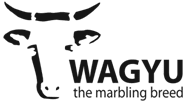 A SPOKESMAN for a large vertically-integrated beef supply chain which has recently invested heavily in Wagyu production has called for dialogue around the merits of introducing minimum standards for Australian Wagyu beef.
A SPOKESMAN for a large vertically-integrated beef supply chain which has recently invested heavily in Wagyu production has called for dialogue around the merits of introducing minimum standards for Australian Wagyu beef.
Speaking during a conference session at the Australian Wagyu Association’s annual meeting on the Gold Coast this morning, Australian Country Choice chief executive officer Anthony Lee stressed the importance of protecting ‘Brand Wagyu Australia,’ which he said could not be under-estimated.

ACC’s Anthony Lee
“In my view, we need to establish standards and guidelines by which the prestigious Wagyu name can be used. If we don’t do this, there is an increased prospect of manipulation – which over time would be to the detriment of all Australian Wagyu producers and brand owners,” Mr Lee said.
If this eventuated, the Wagyu reputation would be devalued, and customers would lose trust.
A set of standards would put a structural backbone and framework in place, and strengthen product integrity and quality, Mr Lee said.
“At very least, we’d like to see a conversation held within the industry about the concept of standards. The main thing is making sure we get the right outcome for brand Wagyu Australia. We need to ensure that the customers in Australia and around the world feel confident that the product (at least out of Australia) is ‘right’.”
“What form those standards would take, I’m not sure. But a lot of people in the Wagyu sector are doing great work, only for others to come in and have a ‘quick win,’ in what constitutes the most prestigious and costly segment of the world’s beef industry.”
Long history
The application of minimum standards and descriptions for beef to be labelled ‘Wagyu’ has been a contentious and even confrontational issue within the Australian Wagyu industry at different times over the past 20 years.
A number of concepts and proposals have been developed since the 2000s, based on marbling performance, breed content, or both. The key sticking-point has always been the debate about whether such regulation falls within the remit of a breed society, or whether responsibility best lies with commercial brand managers, whose product may ‘sink or swim’ on its consistency and reliability.
In dramatic scenes at an AWA annual meeting in the early 2000s, a resolution to implement such standards was pulled from the agenda within minutes of the vote being taken by members, after it became apparent that the advocates did not have the numbers.
 Australian Wagyu Association chief executive Dr Matt McDonagh said there was always some level of interest among Wagyu supply chain stakeholders in the topic.
Australian Wagyu Association chief executive Dr Matt McDonagh said there was always some level of interest among Wagyu supply chain stakeholders in the topic.
“About every ten years, this issue tends to pop up again,” he said.
“However the reality is the industry already has well established, high quality commercial brands, that trade on their excellent reputation and quality values.”
“But at the same time, Anthony Lee made some very valid points about how the broader Wagyu sector might be supported in some way, to protect the Wagyu brand as a whole. That is an issue that we need to look at further.”
Certainly the dynamics within the industry continue to change, and the AWA had to be prepared to move with those changes. What applied ten years ago may no longer be valid today, Dr McDonagh said.
“Within the AWA, we’re interested in having that conversation about where, or whether, the association might be able to assist,” he said.
Globalisation of Wagyu
ACC’s Anthony Lee also warned conference delegates that the Australian Wagyu industry needed to be mindful of the prospect of ‘globalisation’ of Wagyu production, and the effect that could have on Australia’s competitive advantage in the sector.
“We are currently in a strong position, with more global demand for Wagyu than supply. This keeps prices high, however if these dynamics change due to other countries supplying a similar quality product, at a cheaper price, then the equation could be very different,” he said.
“If this occurs, Australian Wagyu brands would need to sell their product for less, and in turn, play less for Wagyu feeder cattle. Therefore we need to look at ways to differentiate our product quality, and country reputation, to that from others.”
Dr McDonagh said if more serious Wagyu beef export competitors were to emerge in future years, as Mr Lee suggested, minimum standards for Australian Wagyu could be one tool that might help set Australian brands up with a point of difference.
“But having said that, the quality, and consistency of quality, being produced by all of Australia’s top Wagyu brands is phenomenal. That provides some brand protection in its own right – and it’s very difficult to fake that level of performance.”
- More on ACC’s entry into the Wagyu beef sector in a following story.



When dining out I used to have Wagyu and each time I asked what the f rating was so I knew what I was eating, never has the wait staff nor the chef’s been able to answer the question.
I would be educating the restaurant staff and the public on quality rating before the public are turned off, I as a breeder of beef I am not game to touch it.